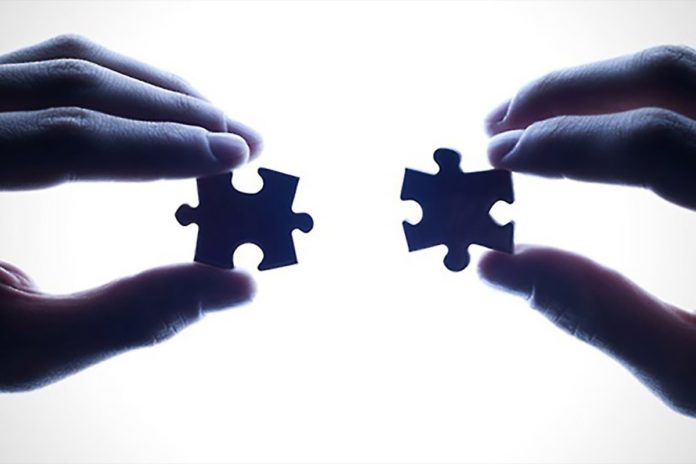Speaking at the Powering Progress Together event at the Shell Technology Centre Bangalore in India, Harry Brekelmans, Shell Projects and Technology Director, says that partnership is the key to making lasting change
I am delighted to be back in India. Bangalore is such a thriving, vibrant, energising city… Where better to discuss the future of transport? Events like this are so important. They give us the chance to bring people together, exchange ideas and find solutions.

And we need to work together in this significant time of change… A time when the world is trying to address a growing demand for energy… at the same time as it moves to a cleaner, lower-carbon energy system. A time when everyone from countries… to companies… to individual consumers must play their part in reducing carbon emissions and improving air quality. We all have a chance to shape the future – and the outcomes will be even better if we work together.
A history of partnership
Indeed, Shell and India have a long history of partnership. And March 31, 2017, was a big day for this partnership. That was when we opened the Shell Technology Centre Bangalore – and it is one of Shell’s top centres for research and development across the world. We are proud of the work we do in India. And we see the country as a hub for innovation, a centre for the very best talent and a country that is a vital part of Shell’s future growth. Change is taking place in India at an extraordinary rate. Consider India’s significant economic growth, its rapid urbanisation and even its ambitious space programme.
At the UN Climate Summit in New York in September, Prime Minister Narendra Modi pledged to increase India’s renewable energy capacity, encourage the adoption of electric vehicles and increase the use of biofuels. He talked about the need for actions, not words.
India is already the world’s largest market for two and three-wheel vehicles… it is on its way to becoming the third-largest market for passenger vehicles by 2021… and it even has plans for a hyperloop system that would be a world first. Mumbai to Pune in just over 30 minutes. Think of that! This is just a glimpse of why Shell considers our partnership with India so important when it comes to the future of transport – and beyond.
Let me give you a sense of what that really means… let me give you an idea of what Shell is working on right here, behind these walls.
Three projects, one centre
I will start with one project, which, when I explain it, you might think is an unusual way of tackling pollution. But air quality is a challenge so pressing that we must come at it from all angles.
In March, Shell launched a product that is both practical and innovative. We have engineered a bitumen that reduces the emissions that cause pollution when a road surface is laid. And because it acts on odour-releasing molecules… it even smells better too. And if you want to see it for yourselves, we used it on the track for the Shell Eco-marathon. We are also working on advanced biofuels right here. With the IH2 technology, we aim to prove that agricultural residues and other wastes can be converted into lower-carbon transport fuels – at commercial scale.
And finally, we are developing the talent of the future here too. Our E4 programme helps entrepreneurs to build successful energy companies. This year, the businesses involved are all about shaping the future of transport.
One of these, igrenEnergi, has developed a system that improves the battery performance of electric vehicles. And I am sure that the founder Jiten Apte will tell us much more when he joins our panel later. This gives you a flavour of the many different types of projects Shell is working on in Bangalore… and the many fruits of our partnership with India… but what about Shell’s broader work on the future of transport?
The broader picture
Shell’s projects include liquefied natural gas, or LNG for trucking and shipping… hydrogen as a fuel with its potential for heavy freight, including rail… and digitalisation, which makes transport systems more efficient – as well as vehicles… and their drivers. Our projects also include the electrification of transport.
Now, I know that there is great debate in India about the potential of electric vehicles… About battery exchange stations… About electrifying the many city buses, the shared car fleets of Ola and Uber and all those two and three-wheel vehicles. Indeed, another of our panellists, Hemalatha Annamalai is doing just that with her company Ampere.
For Shell’s part, we are working globally with governments, across industry and with our customers as we increase our involvement in the electric vehicle market. And… we are not just focusing on charging electric vehicles. We want to help make them run better too. We are working with car manufacturers across the world, including Mahindra, on a range of fluids for electric vehicles. Shell E-fluids were launched in May and are designed to improve vehicle performance, extend battery range and increase the lifespan of crucial components.
We have a great collaborative partnership with Mahindra and many others here, today. And each of my examples comes from different kinds of partnerships. And we want to build and strengthen these.
Working across business
Indeed, Shell is seeking to help to establish a way of working with other businesses and across sectors at a significant scale. This is an attempt to marry the efforts of energy-supply companies with those of energy-use companies to decarbonise energy. There are three ways to do this.
First, improve energy efficiency. Second, turn to lower-carbon energy products. Third, offset or store away emissions that cannot be avoided. How these would be balanced and combined would be different for each sector, and all sectors would need all three. And that is not the end of the story. There is a fourth element. The world must also address consumption patterns.
But, in terms of transport, how would such a coalition work? Take the marine industry. This would mean ports and governments and ship builders and industry bodies working together to improve efficiency, pilot new fuels and offset any emissions that remain.
Coalition for the future
The Getting to Zero coalition is a good example of the type of action needed. It was announced at the UN Climate Summit – and it brings together Maersk, Citigroup, Shell and the Danish government, among others. The coalition is aiming to put a commercial ship to sea by 2030 that does not add greenhouse-gas emissions to the stock in the atmosphere. In other words, a net-zero emissions ship. Now that is a partnership that seeks to shape the future. And the future will come in many shapes. Whether this comes in the form of electric two- or three-wheelers… The LNG bus stationed at the centre’s entrance… Or even, hyperloop travel. Whatever forms the future of transport takes, we will all be able to influence them. By building and strengthening partnerships. By exchanging ideas. By finding solutions together. This is how we can shape the future of transport.






